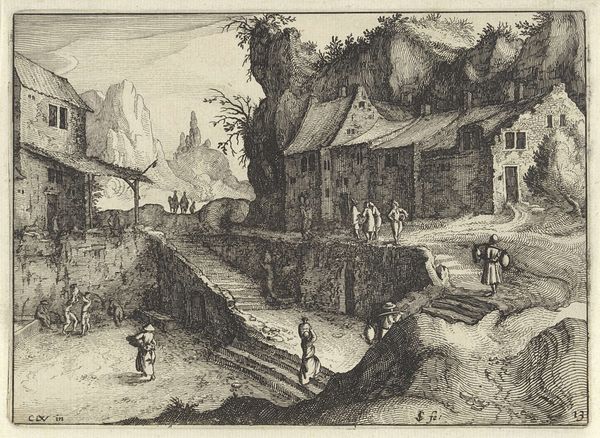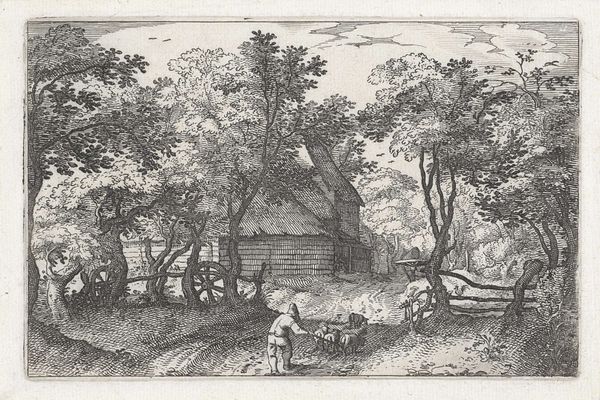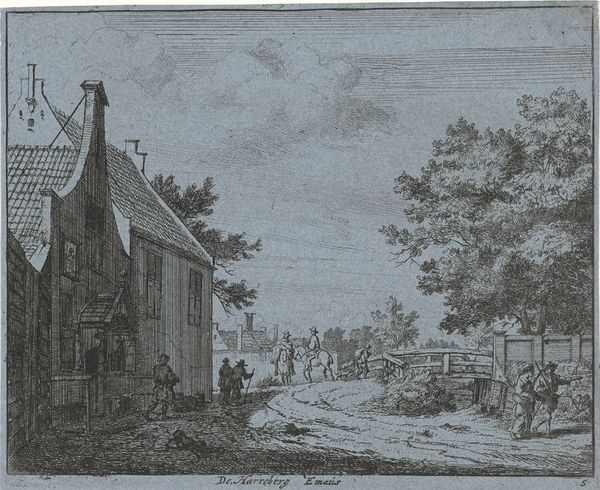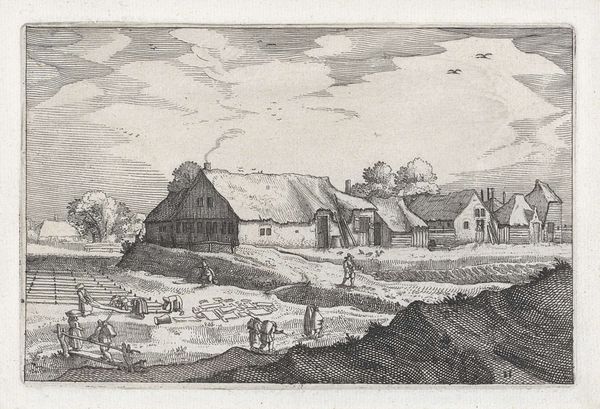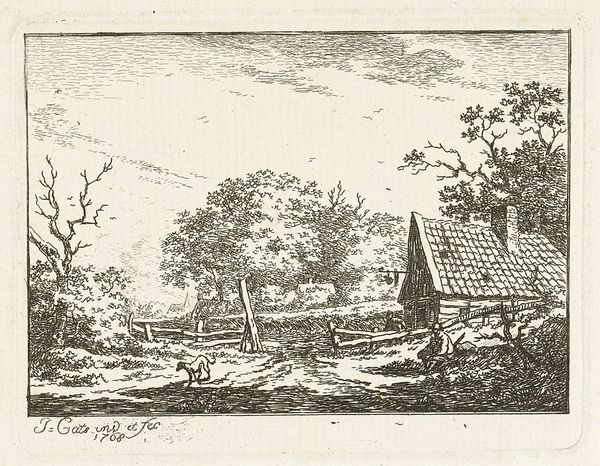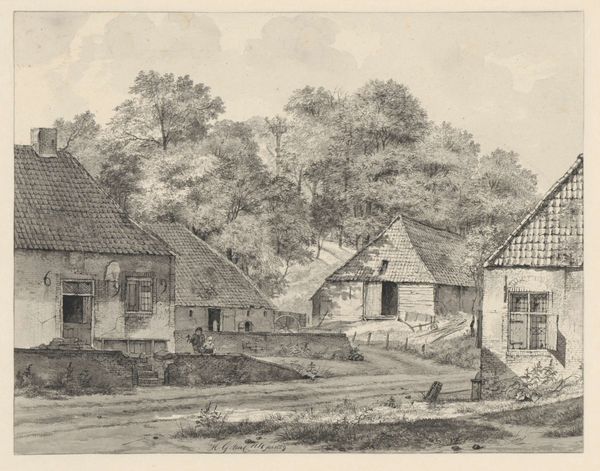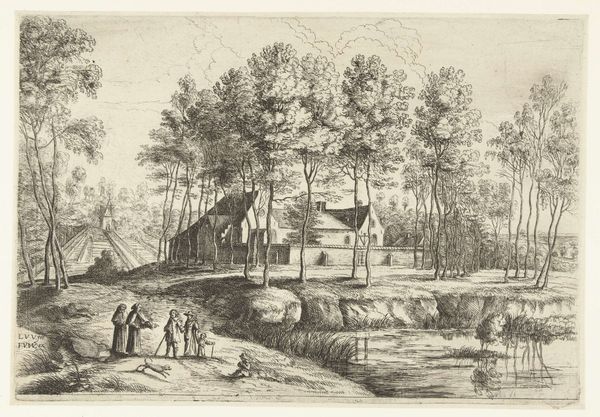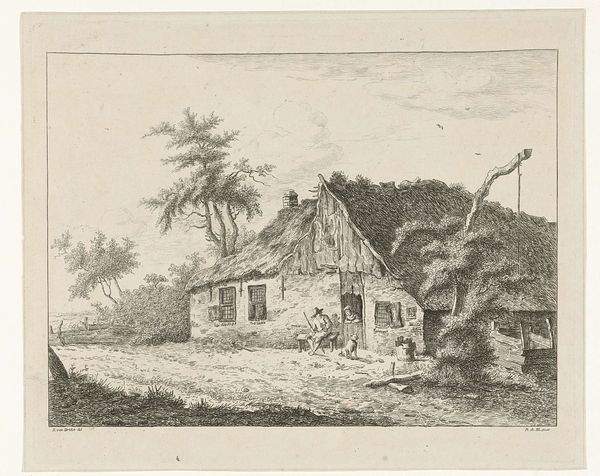
drawing, print, etching
#
drawing
#
baroque
# print
#
etching
#
landscape
Dimensions: height 130 mm, width 178 mm
Copyright: Rijks Museum: Open Domain
Curator: Up next, we have "Houses Along a Country Road," a print and etching attributed to an anonymous artist, created sometime between 1700 and 1800. It's currently held at the Rijksmuseum. Editor: The scene is unexpectedly serene; the stark contrasts achieved through etching create a somewhat somber atmosphere, even for a landscape. The composition guides your eye along that dirt road... a slightly ominous dirt road, I might add. Curator: I appreciate your immediate read on the tone. Looking at the formal elements, the composition clearly establishes a dominant diagonal using the road and fence to achieve spatial depth. The mark-making is particularly interesting – observe the variation in the etching lines used to define textures and forms, from the densely hatched shadows in the foreground to the delicate, feathery trees. Editor: Indeed, I'm struck by how that tonal contrast works here. While this piece reflects certain aesthetic inclinations we often observe within Baroque landscape, the etching technique is very public. Printed works circulated widely; how does an increased circulation influence, or reflect, the evolving socio-economic structures of 18th-century Holland? Curator: That is something worth considering in depth. I believe that you bring up an excellent point regarding accessibility and its relationship to artistic dissemination during this period. One might look at other landscape etchings, but perhaps those from Rome, to try and discover regional evolutions and influences during this century. Editor: Perhaps. We often romanticize this imagery of country life, but consider what this artist leaves out. Where are the people at work? Where's evidence of poverty and toil? How might this be communicating ideas about Dutch society? Curator: A valid point. One can certainly ask about absent forms in the landscape! Editor: That all contributes to a narrative—even absence. Well, this exercise reminds us how different ways of viewing create distinct and meaningful engagements with the art object! Curator: Quite so. This was also an illuminating reminder of how essential it is to consider a multitude of viewpoints to unlock a richer and more well-rounded appreciation of artistic production.
Comments
No comments
Be the first to comment and join the conversation on the ultimate creative platform.


